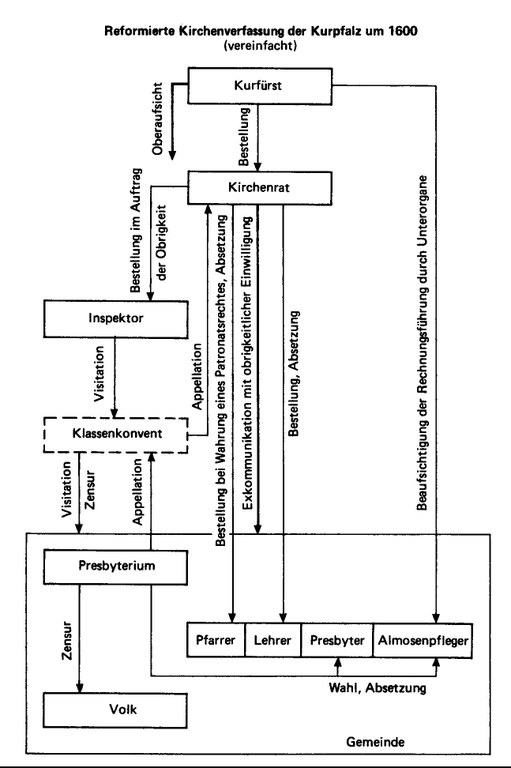Structure of the Reformed Church in the Electoral Palatinate Around 1600

The German Reformed churches were usually – as in the case of the Electoral Palatinate depicted here – a composite of a hierarchical order, in which the territorial ruler and a council formed the supreme leadership of the church and supervised the church by means of inspectors, and a countervailing presbyterian-synodal structure at the local level.
Structure of the Reformed church of the Electoral Palatinate around 1600, diagram, unknown creator, 1987; source: Jedin, Hubert / Latourette, Kenneth Scott / Martin, Jochen: Atlas zur Kirchengeschichte: Die christlichen Kirchen in Geschichte und Gegenwart, Herder Verlag, 3rd ed., Freiburg 1987, p. 75. With the generous permission of Herder Verlag.